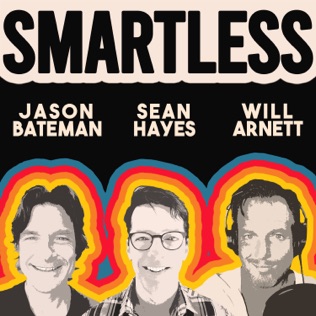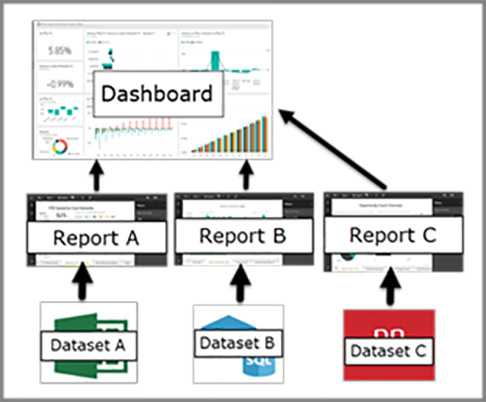Welcome to Around the Table, a regular series where we talk to fascinating people in our network and share the incredible work they are doing in their community. Pull up a chair and join us for conversation and connection.
Name: Patricia Macchi, National Infrastructure Economics & Grant Advisory Practice Lead, Senior Principal
Company: STV Group
Where to find you: LinkedIn
What drew you to studying economics?
The pursuit of studying economics is for me a unique and personal journey. The roots of this academic passion extend back to my childhood. A captivating influence on my early interest in economics was my grandfather, who played a significant role in shaping my intellectual curiosity. From a young age, he initiated a tradition of sharing weekly economic news articles with me, creating a special time for us to delve into discussions on these intricate topics. His genuine passion for the subject became a guiding light, illuminating the profound impact economics has on shaping global affairs and individual lives.
What particularly resonated with me was not just the subject matter but the way my grandfather artfully translated his enthusiasm. He didn’t just share economic news; he instilled a sense of wonder and curiosity, transforming our discussions into intellectual adventures. Those formative experiences laid the foundation for my deep-seated interest in economics, illustrating how a shared passion and mentorship can profoundly influence one’s academic trajectory.
In essence, my choice to study economics is not merely an academic pursuit but a continuation of the legacy of shared wisdom and enthusiasm that my grandfather generously bestowed upon me. It’s a tribute to those early conversations that ignited a flame of curiosity, leading me to explore the intricate tapestry of economic principles and their real-world implications.
How did you go about combining your knowledge of economics with a career in transportation?
As a student in Argentina, I attended a relatively small university where my fascination with trade economics took root. The intricate dance of global economies and the profound impact on societies captivated me, even though there were no specific classes on transportation economics. Trade economics, however, proved to be the closest nexus to the world of transportation, offering insights into the movement of goods and the interconnectedness of markets. It was during this academic exploration that I began to recognize the fundamental role that transportation plays in facilitating trade and shaping economic landscapes.
My transition from academic curiosity to practical application took a significant leap when I joined the Latin America Chief Economist Office at The World Bank. Here, I found an opportunity to contribute to theoretical papers that delved into the critical intersection of infrastructure and economic development. The allure of understanding how transportation infrastructure underpins economic growth became evident, setting the stage for my deeper immersion into the transportation arena.
A pivotal moment came when I joined the South Saharan Africa (SSA) Transportation Unit, where my focus shifted towards studying transportation costs in five African countries. This experience provided a firsthand understanding of the intricacies and challenges faced by regions in optimizing their transportation networks. It was a transformative period that solidified my commitment to the transportation sector.
Over 10 years, I have dedicated my work to the transportation landscapes of Latin America and SSA, delving into the nuances that shape these regions’ connectivity and economic vitality. In the last decade, my focus has expanded to encompass the intricate tapestry of transportation dynamics within the United States.
What are some of the biggest challenges you’ve encountered working in the transportation infrastructure industry?
Navigating the intricate landscape of the transportation infrastructure industry presents a myriad of challenges, and I’ve come to view each obstacle as a unique opportunity for personal and professional growth. One of the most prominent challenges we encounter is the perennial issue of narrowing funding gaps. The financial intricacies of developing and maintaining robust transportation systems demand innovative solutions.
Embracing these challenges, I’ve found that they serve as catalysts for creativity and strategic thinking. It’s not merely about overcoming obstacles but about envisioning opportunities within them. Every funding gap is a chance to explore alternative financing models, engage in public-private partnerships, and advocate for sustainable investment in transportation infrastructure.
The recent enactment of the Infrastructure Investment and Jobs Act (IIJA) has ushered in a once-in-a-lifetime opportunity to reshape the transportation landscape. This transformative legislation opens doors to unprecedented funding streams, allowing us to lay the foundation for the transportation system of tomorrow. It’s an exciting era where challenges are met with forward-thinking solutions, and collaboration becomes paramount.
In my journey, I’ve witnessed how overcoming funding challenges requires a holistic approach. This involves fostering partnerships with governmental bodies, private entities, and community stakeholders. By cultivating these alliances, we not only secure financial backing but also ensure that our projects align with the diverse needs and aspirations of the communities we serve. Ultimately, the challenges in the transportation infrastructure industry have become waypoints in a larger journey of progress. Each hurdle surmounted contributes to the realization of safer, more efficient, and sustainable transportation systems.
What are some of your current projects at STV Group?
At STV, I have the privilege of leading the National Infrastructure Economic and Grant Advisory Group, a role that involves spearheading various impactful projects. Currently, our team is actively engaged in supporting Zero Emission Transition plans for prominent transit agencies such as HRT, CATS, and MCDOT. This involves comprehensive assistance in developing and implementing plans that align with the imperative shift towards sustainable and environmentally friendly transportation solutions.
A significant focus of my efforts has also been directed towards the DFW Airport Modernization Plan and Zero Emission Roadmap. This involves strategic advisory services aimed at modernizing transportation infrastructure and seamlessly integrating zero-emission solutions into the roadmap. It’s a testament to our commitment to fostering advancements in transportation that are not only efficient but also environmentally conscious.
One noteworthy achievement is our collaboration with the New York City School Bus Umbrella Services (NYCSBUS) in securing a substantial $29.5 million through the Environmental Protection Agency’s Clean School Bus Grant Program. My team played a pivotal role in this success by providing comprehensive advisory services throughout the application process. Our contributions included project review, application development, schedule management, technical writing and review, as well as overall strategy development for a robust grant application.
Can you speak to the unique challenges in working with transportation agencies at a state level or a local level?
At the state level, the scope and scale of projects often bring forth challenges tied to managing numerous competing initiatives. Coordinating and prioritizing among these diverse projects requires a delicate balance. Additionally, engaging with multiple stakeholders, each with their own priorities and perspectives, adds a layer of complexity. Successful navigation at the state level involves strategic planning, effective communication, and the ability to foster collaboration among diverse entities.
On the other hand, the local level introduces a different set of challenges, primarily centered around resource constraints. Local agencies often grapple with limited budgets and manpower, making it imperative to address the most pressing needs efficiently. Balancing immediate requirements while providing long-term guidance necessitates a strategic and nuanced approach. This involves not only solving immediate challenges but also laying the groundwork for transportation solutions that benefit the community over the long term.
Despite these challenges, the work at both state and local levels is incredibly rewarding. The impact of transportation projects is felt directly by communities, influencing their accessibility, connectivity, and overall quality of life. Contributing to the improvement of transportation infrastructure at these levels provides a tangible and positive influence on people’s daily experiences.
What is some of the best career advice you’ve received so far? What would you say to someone starting out in the transportation infrastructure field?
Throughout my career, I’ve been fortunate to receive some invaluable pieces of advice that have shaped my professional journey. One powerful mantra that resonates with me is, “Women can have it all; just not at the same time.” This profound statement encapsulates the essence of managing goals and expectations over the course of one’s career.
In the dynamic realm of the transportation infrastructure field, where challenges and opportunities abound, the advice I would extend to those starting out is to embrace a strategic approach to their career. It’s essential to set realistic expectations, recognizing that career progression may not always follow a linear path. Instead, view your career as a series of chapters, each presenting its own set of challenges and accomplishments.
Another crucial aspect is fostering a strong network within the industry. Building connections with mentors, colleagues, and professionals in the field can provide valuable insights, guidance, and support. Collaboration and mentorship can be instrumental in navigating the complexities of the transportation infrastructure sector. Furthermore, stay informed about industry trends, technological advancements, and regulatory changes. Continuous learning and adaptability are key in a field that is constantly evolving. Seek opportunities for professional development, attend conferences, and stay engaged with relevant publications to stay at the forefront of industry knowledge.
If we were literally around the table right now, what food would you have brought with you to share?
In this virtual feast, I would proudly present empanadas, a beloved finger food from Argentina. Picture golden, flaky pastry pockets filled with a flavorful blend of meats, vegetables, and spices. These delightful empanadas are not just a snack; they are a culinary representation of the rich and diverse tastes of Argentina. Personally, my heart lies with the savory delights of the beef-filled empanadas, the sweet simplicity of corn-infused ones, and the tantalizing combination of tomatoes, basil, and mozzarella in another delightful variation.


















